Chapter Two - Other single-seaters: Any series, any time, anywhere…
A deflating debut might have stalled his career before it began. Instead, Clark began to soar through single-seaters of all levels with his trademark ease and adaptability
DPPI
Clark’s first race in a monoposto was dispiriting. The battery of his ill-handling Formula Junior Gemini was as flat as his mood at the cold, damp Boxing Day Brands Hatch meeting of 1959. Resorting to a push-start, he finished eighth. And that might have been that but for the coaxing of friends convinced of his talent.
His second race, fewer than three months later, would change his life forever while setting out a road map for the sport for a new decade: he won at Goodwood in March 1960 in a Lotus 18 – Chapman’s first design with its engine behind the driver – powered by a Ford production engine modified by Cosworth Engineering; the latter’s Keith Duckworth could work with Chapman – just not under the same roof.
Junior was a recent Italian construct for promoting its young driving talent. It had, however, in short order become the third rung in Britain’s rapid ascent. Within months Clark would have stood on all three: Junior, Formula 2 and Formula 1. By April 1961 he had won in all three.
He was done and dusted with Junior by the end of 1960 but F2 – revived in 1964 after a three-year absence – would remain with him to the (bitter) end. In his miracle year of 1965 he won the category’s prestigious and pecunious Trophées de France. By 1968, however, some were beginning to ask privately why Chapman was working his prize asset so (unnecessarily) hard.
And it’s true that Clark’s mood on that dank April day at Hockenheim was flat; his ill-handling car offering no chance of victory. But it was normal then for the best to regularly stick his reputation – and neck – on the line at lesser events. The F2 wins that Rindt and Stewart scored over Clark, in arguably better cars – Chapman, empire expanding, was no longer giving the category his full attention – sustained them during periods of frustration at the highest level. For Clark, it was a release, the tear-up denied him by F1’s pressures and his primacy: being beaten in F2 was a disappointment and nothing more.
The Tasman Series – a codification from 1964 of disparate ‘winter sun’ Down Under races in New Zealand and Australia – was something else again. Its 2.5-litre ‘GP’ cars were a more serious prospect than were the 1-litre and later 1600cc F2s – and perhaps even the 1.5-litre F1s – of the period, while its far-flung self-containment gave it the air of a secondary world championship albeit with an extended adventure holiday thrown in: Clark, who won the series three times in four years, also took the opportunity to learn how to fly, how to water-ski – and how to assert himself.
Having been impressed late in 1967 by the aerodynamic appendages of the first non-Lotus single-seater he had raced since that disappointing Gemini, Clark had his 1968 Tasman crew fashion and fit a small rear wing above the gearbox of his Lotus 49T. Though he complied dutifully with Chapman’s removal order – my car, my rules! – issued once word had reached the UK, Clark would soon be proved to have been absolutely right – just not quite soon enough.
Nor would he ever feel the full effect of Chapman’s inking, just the week before, of a commercial sponsorship deal with the Imperial Tobacco company, its bold livery, lurid to conservative eyes, being cagily revealed before an easygoing New Zealand audience; the Aussies would briefly get their long shorts in a twist about it. Clark naturally gave this combination a winning debut, and it would provide him with his final victory, too: the Australian Grand Prix at Sandown on 25 February.
This new promotional demand was one of the reasons why Clark was at Hockenheim. Another was that Chapman had become possessive of his prize asset, if not yet entirely understanding nor appreciative of its gradual metamorphosis. He did not want Clark to drive Ford’s new two-seater sports-prototype in the concurrent BOAC 500 at Brands Hatch – even though Ford had paid for the development of the DFV and for the creation of a Lotus superteam with the signing of Graham Hill, Clark’s most determined rival. Motor sport was becoming more complicated.
The stone cross that marked the site of Clark’s fatal accident is a small, simple affair – name and date only – which for a time became lost amid growing greenery and greed.
Resituated due to the track’s reconfiguration, it’s a gentle reminder, lost on some, of what motor racing was like, its dangers and all, between April 7, 1968 and that chilly day at Goodwood eight years before – and of the quiet gentleman genius who bestrode them.
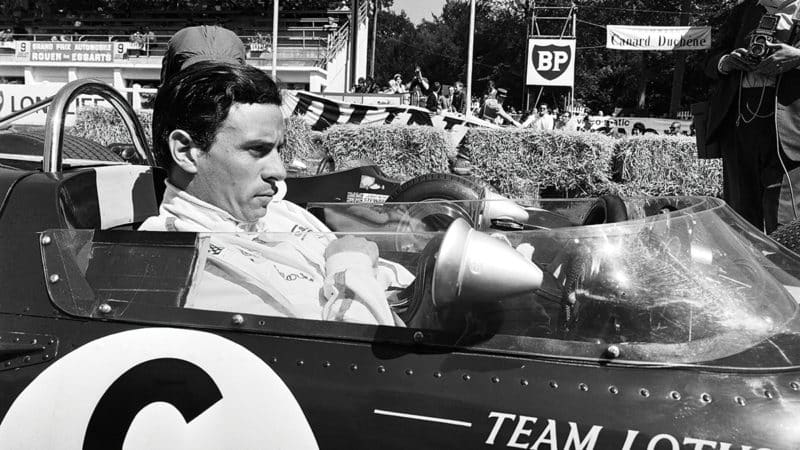
Clark strikes a thoughtful pose on the Rouen F2 grid in 1965, with Jackie Stewart’s Tyrrell Cooper visible just behind. He went on to win at the wheel of his Lotus 35, lapping all but two other drivers in the process. Graham Hill was second in John Coombs’ Brabham BT16; Stewart retired with fading oil pressure
DPPI
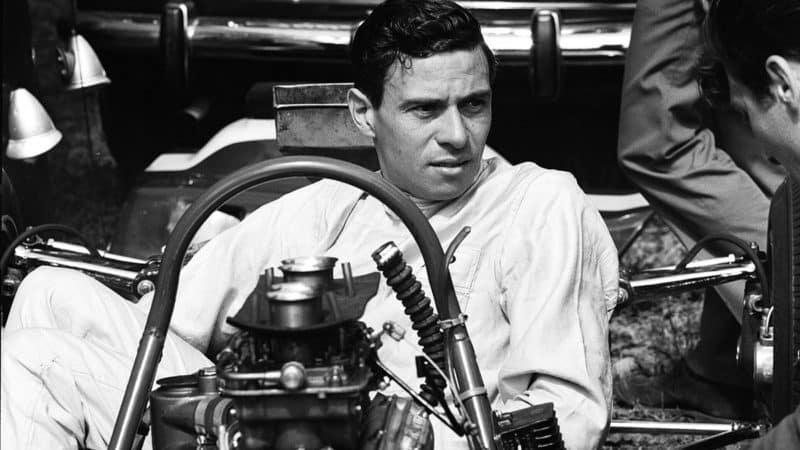
Another shot from the Rouen F2 meeting in 1965, Clark perched in the paddock long before drivers were able to retreat to air-conditioned motorhomes. This was the third of four events counting towards the Trophée de France; Clark won three and finished third at Reims
DPPI
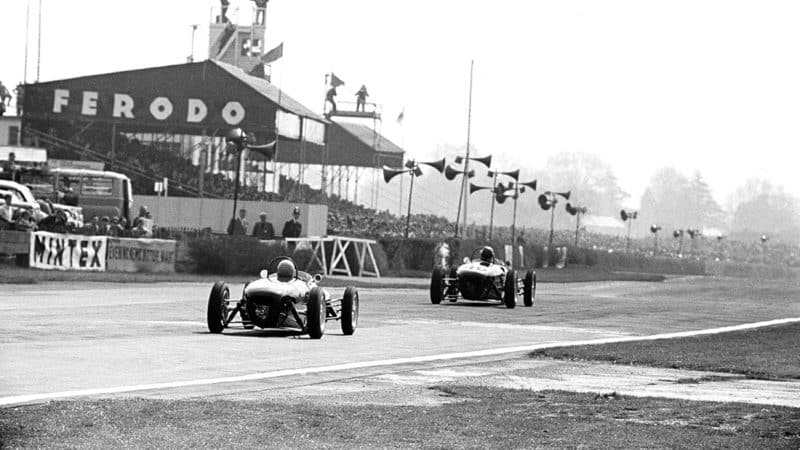
Goodwood, Easter Monday, 1960: Clark and Lotus team-mate Trevor Taylor head down the pit straight en route to recording a 1-2 finish in the Chichester Cup race for Formula Junior cars. Mike McKee completed a 1-2-3 clean sweep for the Lotus 18, albeit some way behind
GP Library/Universal Images Group via Getty Images)
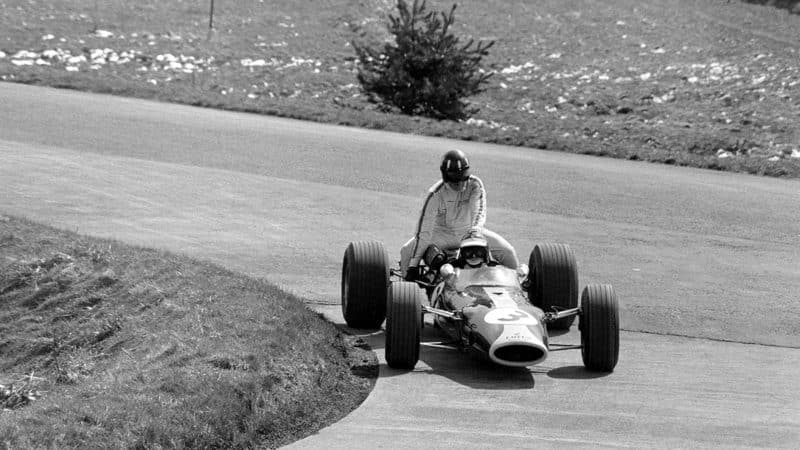
Taxi! Clark takes team-mate Graham Hill back to the pits after the latter’s Lotus 48 hit trouble during practice for the 1967 Eifelrennen. Note the flecks of snow on the ground – always a potential hazard when running a race meeting at the Nürburgring in April…
McKlein / Reinhard Klein / Colin McMaster 2018
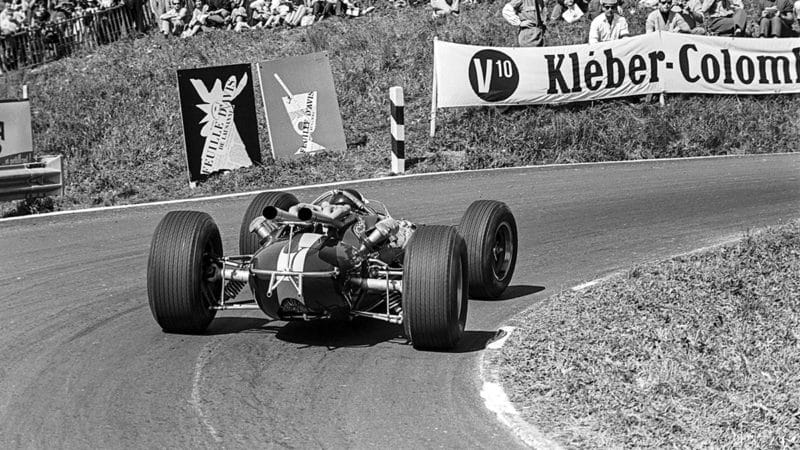
All in a weekend’s work… In addition to his commitments in F1, F2, sports and saloon car racing in 1965, Clark also drove a sister car to his Indianapolis 500-winning Lotus 38 in the Swiss hillclimb events at St Ursanne-les-Rangiers and, pictured here, Ollon-Villars
Bernard Cahier/Getty Images
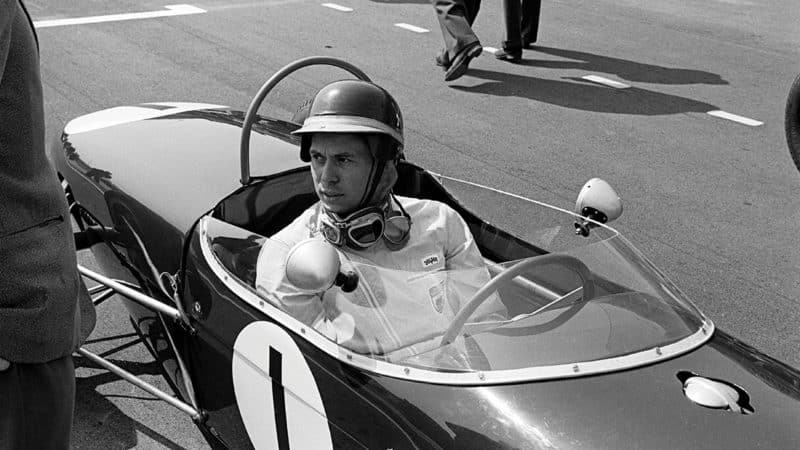
Clark at the Aintree 200 in 1960, when Lotus mixed and matched its Formula 2 drivers. Innes Ireland took over Clark’s car after his own suffered a puncture… and parts were used from Ireland’s abandoned chassis to get Alan Stacey back into the race, many laps in arrears
GP Library/Universal Images Group via Getty Images
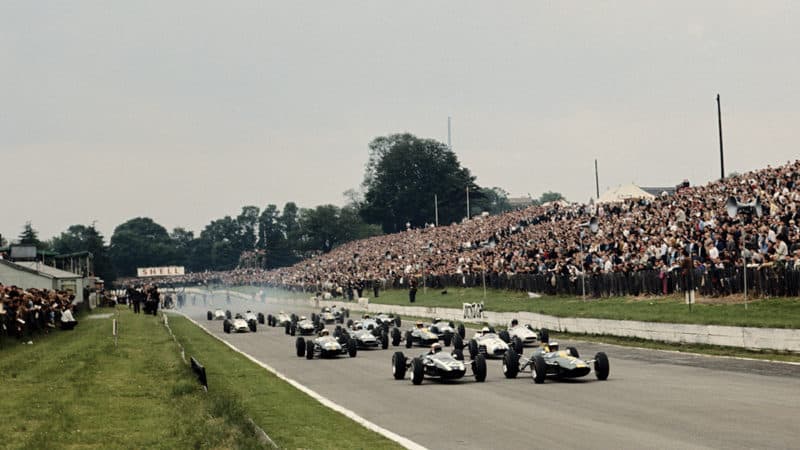
Scots to the fore at the start of the 1965 London Trophy, a F2 race at Crystal Palace. Clark’s Ron Harris Team Lotus 35 is on the right, with Jackie Stewart alongside in Ken Tyrrell’s BRM-engined Cooper T75. Clark won both heats, beating Graham Hill’s Brabham by 11sec on aggregate
Hulton Archive/Getty Images
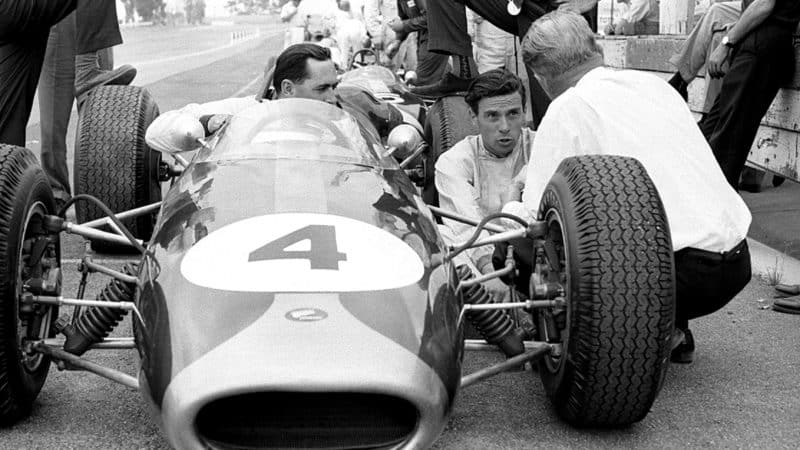
Clark sits alongside rival Jack Brabham ahead of the 1967 Sandown International, fifth of that season’s six Tasman Series races. Clark scored three victories during the campaign to take the title for a second time; he would win it again a year later, his final championship success
Nigel Snowdon/Grand Prix Photo
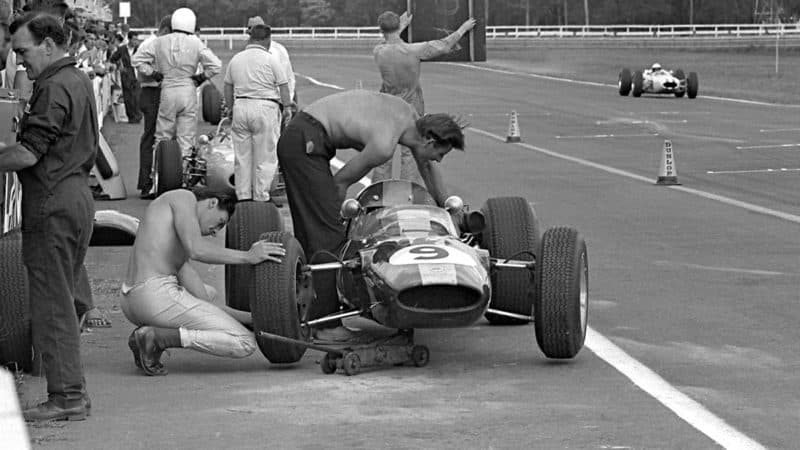
Things you tend not to see today – a top-line driver changing his own wheel. Already crowned Tasman champion for the first time, Clark gets his hands dirty at Lakeside – a non-championship event that took place at the end of the 1965 Tasman Series. He took his Lotus 32 to another win
Nigel Snowdon/Grand Prix Photo/Getty Images
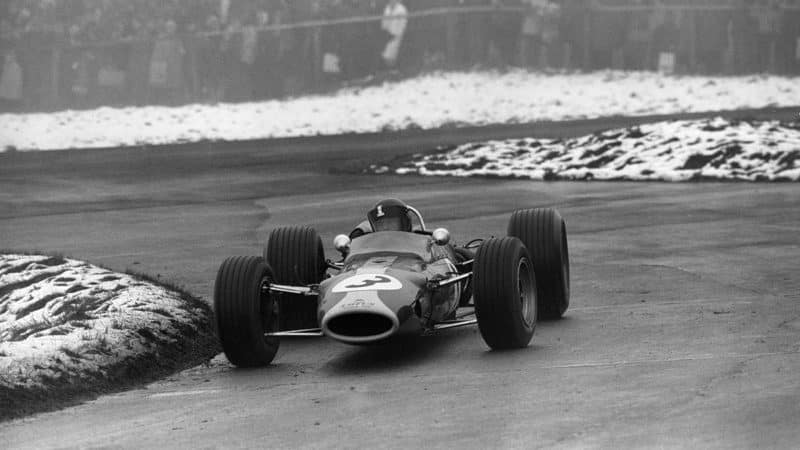
Clark tackles the snow-fringed Nürburgring in 1967. He qualified his Lotus 48 on pole for the XXX International Eifelrennen, but fuel metering trouble scuppered his prospects and he dropped out after 10 of the 30 laps. Jochen Rindt (Brabham) beat a top-class field, with John Surtees (Lola) second and Jacky Ickx (Matra) third
McKlein / Reinhard Klein / Colin McMaster 2018
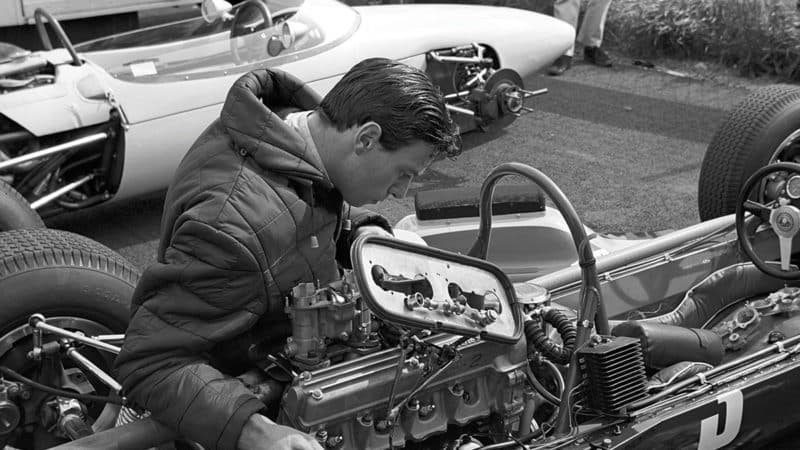
The paddock at Karlskoga, Sweden, in 1965, with Clark taking a keen interest in his Ron Harris-run Lotus 35 ahead of the annual Kanonloppet. He qualified third, but failed to finish a race that produced a 1-2 finish for the works Brabhams of Jack Brabham and Denny Hulme
1965 Kanonloppet F2 Swedencopyright: Mcklein
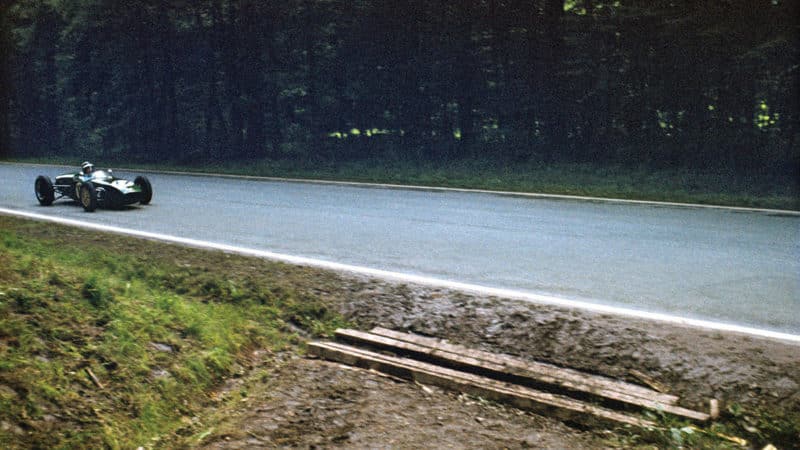
Having won the Formula Junior race from pole at Solitude in 1960, Clark also started the F2 race at the head of the field. After a gentle start, he worked his way into a comfortable lead that lasted until rising water temperature obliged him to pit. He would be classified eighth
Grand Prix Photo